Bristol Type 170 Mk.31 Freighter
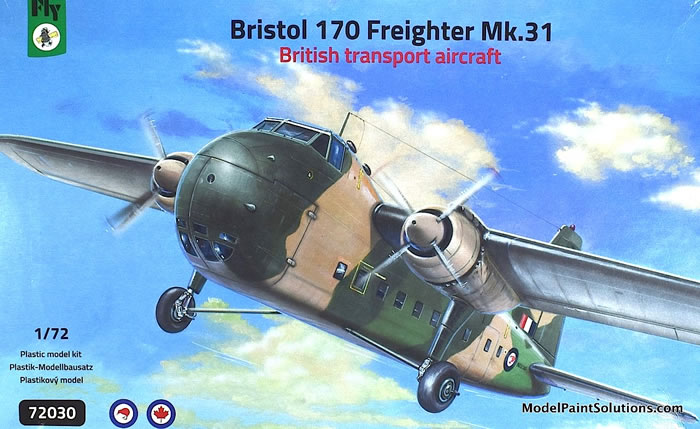
Eduard, 1/72 scale
S
u m m a r y : |
Description and Item No.: |
Fly Kit No. 72030 - Kunkadlo |
Contents and Media: |
100 parts in grey styrene, 25 in resin, 28 in clear, 5 in Paper, and one decal sheet with markings for two airframes. |
Price: |
GBP£49.30 EU Price (£41.08 Export Price) Plus Shipping at Hannants |
Scale: |
1/72 |
Review Type: |
First Look |
Advantages: |
The kit incorporates simple engineering, a low parts count, nicely cast resin, and masks. |
Disadvantages: |
In general some of the styrene parts are over simplified. The chin of the fuselage will have to be removed for the fitting of a clear replacement part with windows. |
Recommendation: |
Beyond the chin surgery, a little flash, and some (read a lot) dry fitting, this should be an enjoyable build. The mix of resin and styrene components for the nacelles and cowls, in particular, will require some patience but the result will be stunning both in size and novelty. Wrap this sizeable model in either the RCAF Green/Grey or RNZAF Viet Nam tri-color scheme and you’ll have an interesting model to say the least. Recommended! |
Reviewed by John Miller

The Bristol Type 170 Freighter was a British twin-engine aircraft designed and built by the Bristol Aeroplane Company as both a freighter and airliner. Its best-known use was as an air ferry to carry cars and their passengers over relatively short distances. A passenger-only version was also produced, known as the Wayfarer.
The Freighter was developed during the Second World War, having attracted official attention from the British Air Ministry, which sought the development of a rugged vehicle capable of carrying various cargoes, including a 3-ton truck. Various changes to the design were made to accommodate their requirements, but being completed too late to participate in the conflict, the majority of sales of the Freighter were to commercial operators. In response to customer demand, an enlarged version to maximize vehicle-carrying capacity, known as the Bristol Superfreighter, was developed.
Military Service:
In military service, Bristol Freighters were operated by the air forces of Argentina, Australia, Burma, Canada, Iraq, Pakistan and New Zealand and briefly by the Pakistan Air Force. After withdrawal, some of the Pakistan aircraft were bought by SAFE Air and used in New Zealand. The Royal Canadian Air Force used five Freighters to carry spares and supplies between the United Kingdom and their bases in France and West Germany.
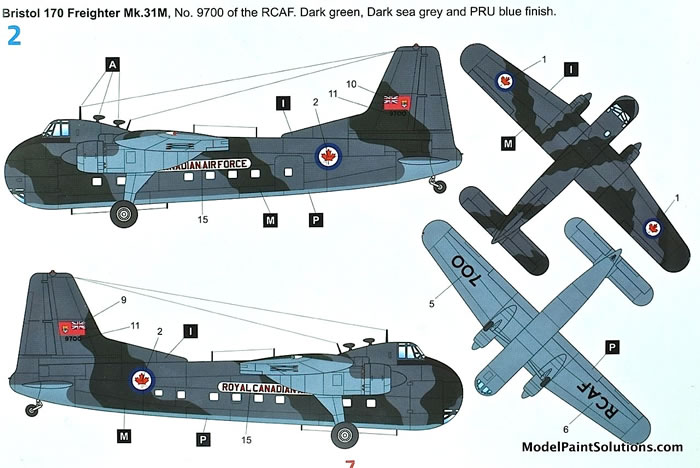
The Royal New Zealand Air Force ordered 12 Mk 31M Freighters in the late 1940s. RNZAF Freighters ranged as far as supplying the New Zealand Army in Malaya, the British High Commissions (and other support staff) in the Maldives, Ceylon, India, and Nepal. It performed Far East Air Force tasks in Malaya and Hong Kong often when other aircraft types were unserviceable owing to maintenance problems. They were used in a highly reliable military shuttle service for allies in Thailand during the Vietnam War and served several other roles, being adapted for—amongst other things—agricultural aerial top dressing experiments. To avoid competition with private enterprise, the New Zealand government did not use them in that role.
(Edited from Wikipedia)
The first impression is one of size; this is going to be a large kit when assembled. The second impression is the relatively small number of parts for such a big model. Being a limited production kit extra effort will be required to deal with flash. In addition, much use is made of resin components so there’ll be some time spent removing parts from pouring lugs and the ensuing clean up.
Surface details are both recessed and in relief where appropriate. There is sufficient detail overall although some of the finer styrene details are a bit soft. The resin components are crisply cast and largely free of pouring holes and other imperfections.
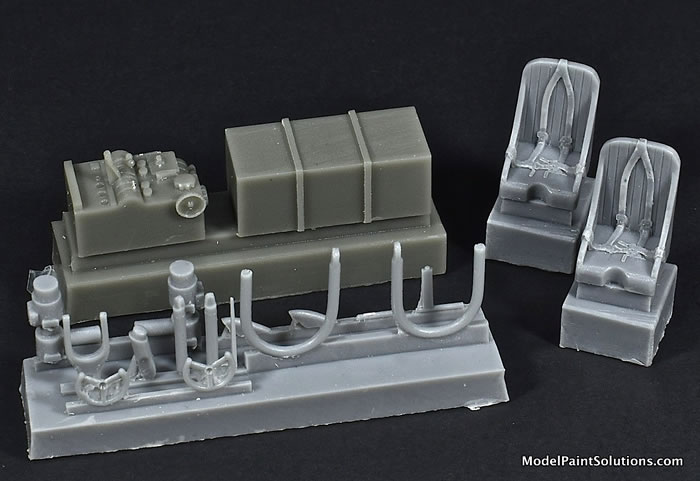
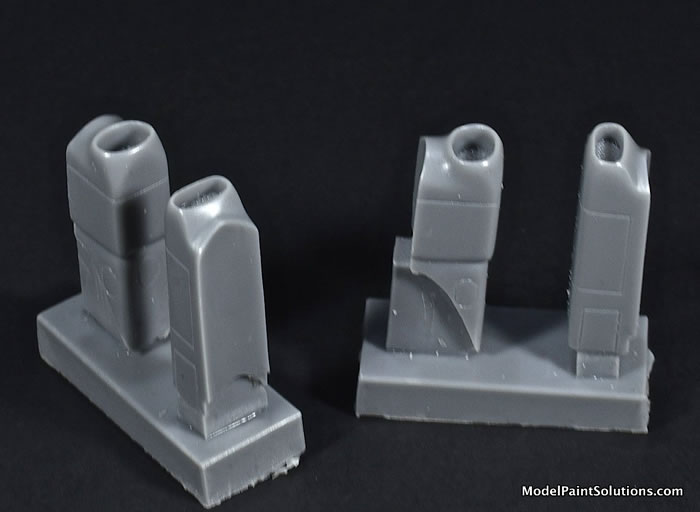
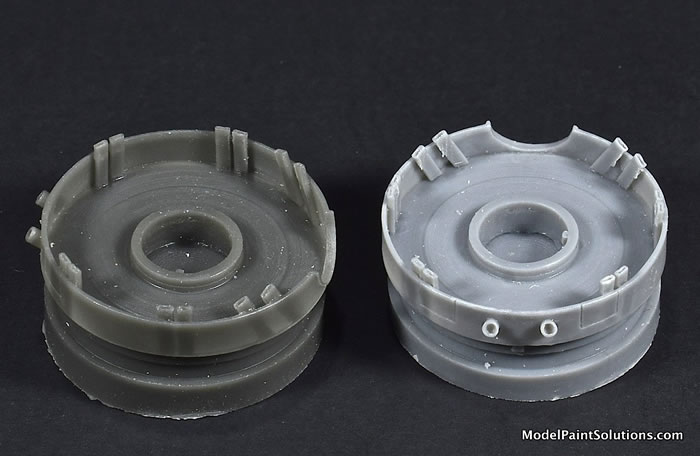
Parts layout and engineering are conventional suggesting this will be a straightforward build.
Well, “Step 1” of the instructions is a bit of a humdinger. Interpreted from the diagram the builder is instructed to remove the lower chin section from each fuselage halve in order to fit a replacement chin with windows that’s molded in clear plastic. Now, many of us have experience grinding and fitting such conversion parts so this is no big deal. If however, you’re new to the sport of scale modeling, approach with patience and caution.
With the fuselage halves given a major “chin job” assembly proper begins with the cockpit, wherein the individual control yokes, rudder pedals, and throttle quadrant are sufficiently detailed for this scale. Of note is the use of crisply printed, color, paper instrument panel faces that are a bit over-scale but should look fine when viewed through the windscreen and cockpit windows when assembled.
The wings are comprised of upper and lower halves with nicely cast leading edge intake inserts in resin. The assembled wings join to the fuselage via a tab and slot join. The horizontal stab/elevator assemblies are comprised of upper and lower halves. The elevators are not poseable. The vertical stab/elevator assembly is comprised of left and right halves. The rudder is not poseable; ditto that for the ailerons.
The engine nacelle and cowl assemblies are a mix of styrene and resin components. The exhausts on the resin cowl parts are particularly nice.
The main gear legs, dual oleos, and associated struts are nicely molded, as are the halved main wheels/tires. All will look convincing under paint and a wash.
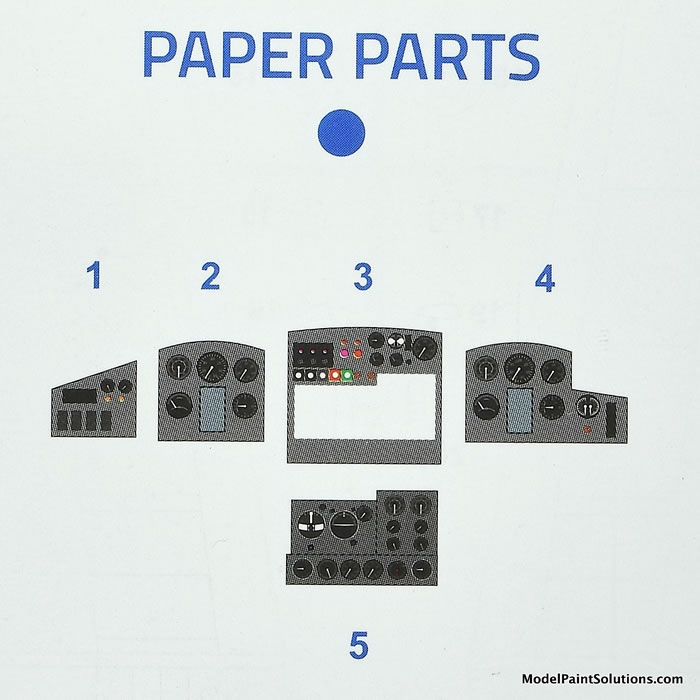
The main cockpit canopy and windows are clear and nicely molded but have some flash that will have to be dealt with during fitting.
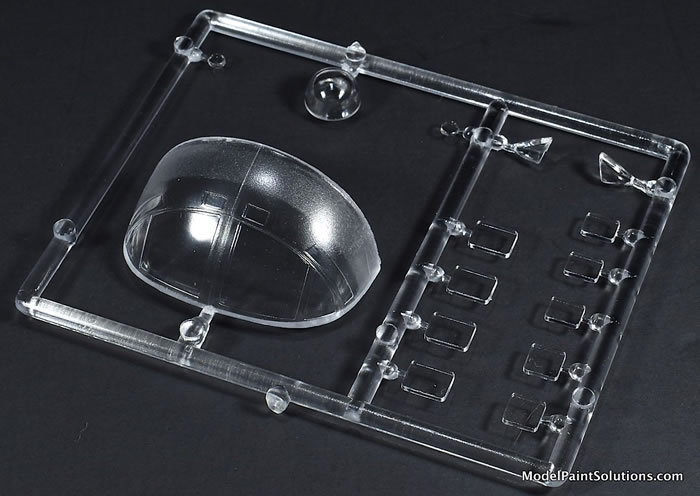
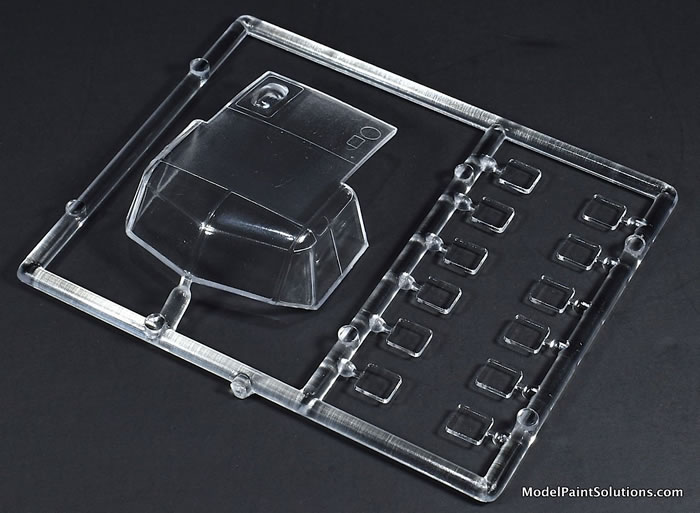
Markings:
The decals, by Fly Models, are well printed with good registration and color density. The blue in the roundels on the primary sheet approaches lavender in color. Kudos to the folks at Fly Models for providing a second sheet with appropriately colored replacement roundels. Unfortunately, the second set of roundels isn’t entirely accurate either. Fortunately for us, Jim Bates, Esq. of A Scale Canadian has chimed in with the accurate low-down on Canadian roundels.
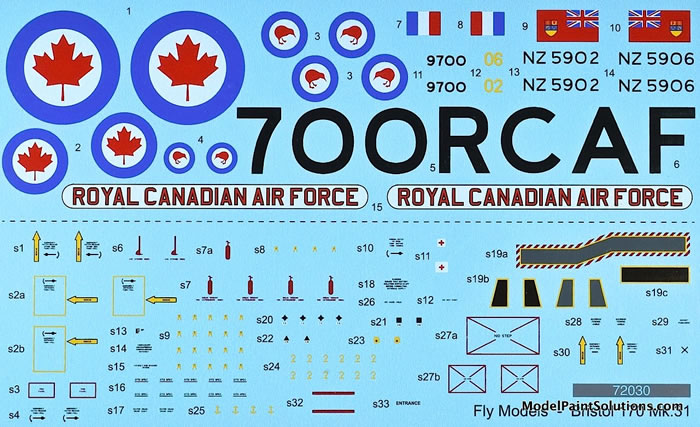
“While Fly's corrective decal sheet corrects the colour of the Canadian roundels, they; unfortunately, miss that the RCAF used a different leaf prior to 1968. The leaf on both decal sheets is the current, rather geometric maple leaf, while the older roundel featured a more artistic silver maple leaf. Sadly, companies often fail to make a simple reach-out to IPMS Canada (or similar); we would have been happy to assist them. While both Leading Edge and Aviaeology did decal sheets with silver maple leaf roundels in the past, neither sheet is currently in print.”

Airframe stencil data and markings for two airframes are provided as follows:
-
Bristol 170 Freighter Mk.31M NZ5906 (NZ5902) of the RNZAF, early 1970’s: Standard Viet Nam camouflage pattern of Shadow Green, Green, and Tan with pale Grey lower surfaces.
-
Bristol 170 Freighter Mk.31M No. 9700 of the RCAF, Dark Green, Dark Sea Grey, and PRU Blue lower surfaces.
Beyond the chin surgery, a little flash, and some (read a lot) dry fitting, this should be an enjoyable build. The mix of resin and styrene components for the nacelles and cowls, in particular, will require some patience but the result will be stunning both in size and novelty. Wrap this sizeable model in either the RCAF Green/Grey or RNZAF Viet Nam tri-color scheme and you’ll have an interesting model to say the least.
Recommended!
For more on this review visit Modelpaintsolutions.com.
Review kit on loan from J. Bates, Esq.
Review Text and Images Copyright © 2020 by John Miller
Page Created 30 May, 2020
Last updated
30 July, 2020
Back to HyperScale Main Page
Back to Reviews Page
|
Home
| What's New |
Features |
Gallery |
Reviews |
Reference |
Forum |
Search